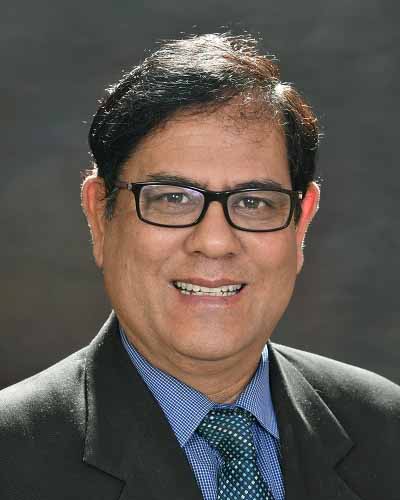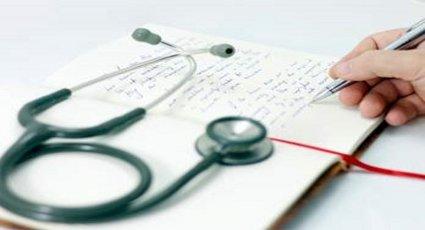Health Protection Gap – The Esoteric concept
Abstract-
The research paper tries to throw light on the different concepts of Health Protection Gap and their adequacy. The paper also suggests that PHVI can play a pivotal role in reducing the health protection gap in India.
It is true that the world is spending more on healthcare expenditure and the health protection gap is showing sign of receding. But the above statement appears bewildering if we delve deeper into the definition of Health Protection gap. You would soon realise that the calculation of health protection gap at times defies logic and hence fails to capture the gap in its totality. The expenditure on healthcare globally is close to USD 8 trillion. There are many reasons why healthcare expenditure has been mounting over the years. The medical treatment globally has been on the rise. People today have better choices as far as medical treatment is concerned. The increasing incomes, the rise of geriatric population, the technological advancement are some of the factors that have been triggering the healthcare cost across the globe.
The main function of any health system should be developing health financing system that protects the population against the financial risks associated with ill health. This financial risk often turns into catastrophic health expenditure and pushes the sufferers into debt trap. Even today, on an average 63 million people fall into debt trap for sheer dearth of financial protection for their healthcare needs.
The word protection gap is often used for catastrophic risk which is the difference between the economic loss and the insured loss. The word health protection gap is, however, defined differently. Very often out-of-pocket spending on health is taken as health protection gap(HPG).
HPG is often is often denoted as catastrophic health expenditure (CHE). According to WHO, Catastrophic health expenditure is described as that portion out-of-pocket expenditure for health care that surpasses a specific proportion of a household’s income in order to treat diseases. Initially it was considered any expenditure that exceeded 40% of household income after the subsistence need has been met.
The definition of Health Protection Gap has been evolutionary. Initially out of pocket spending or OOPS was considered health protection gap. Then CHE was put forward as health protection gap. The health protection gap is now defined in terms of financially stressful out of pocket expenditure and the likely cost of treatment forgone due to the unaffordability factor.
It is important to understand which out of pocket expenditure to be considered stressful. It needs to be understood that certain portion of OOPS is stressful to households, and this particular portion varies from household to household based on their income level.
The OOPS becomes stressful when a household has to cut down optional expenditure on food or education in order to meet the burgeoning medical expenses. Even when savings is used to meet the medical expenses, it should be considered stressful. The distinction needs to be drawn between OOPS and stressful OOPS. If we merely quote OOPS, the probability is there, that we are overstating the size of HPG. Similarly if we don’t take into consideration costs associated with treatment forgone both because of affordability and accessibility, possibly we end up understating the HPG.
In this context, it may be noted that countries having per capita GDP income less than 12000 US$ are considered emerging markets. The low income countries have per capita GDP income 995US$ or less; the lower middle income countries have per capita GDP income between 996 and 3895US$ and upper middle income countries per capita GDP income varying between 3896US$ and 12005US$.
In lower income countries the entire 100% of out of pocket spending is considered financially stressful and as a result forms part of the HPG. When it comes to Lower Middle Income country 75% of the out of pocket expenditure is deemed as financially stressful and forms part of the HPG.
Similarly only 50% of the out of pocket expenditure in upper middle income country is taken as financially stressful and constitutes part of the HPG. As a result, what we find that the financially stressful income is dependent on the level of income. The higher the income, lower would be the financially stressful income and the vice versa. India falls in the category of Lower Middle income country with Gross Domestic Product per capita at 1963.55US$.
Is OOPS a good proxy of HPG…? The answer is no. First OOPS don’t factor medical treatments foregone as a result of patients failing to access the healthcare services because of distance. The cost of treatment that the patients could not afford due to financial reason is also not factored in OOPS.
Due to above flaws, OOPS is not the right and adequate manifestation of HPG. There is always this possibility of understating the HPG. Similarly CHE is also not the right measurement of HPG. CHE like the OOPS fails to capture the costs of treatment foregone due to inaccessibility and unaffordability.
The financially stressful definition of HPG takes into account the costs of medical treatment foregone due to affordability reason but still doesn’t consider treatment forgone due accessibility reason. From the above definitions, it is evident HPG has two distinct constituents. The first relates to that portion of OOPS that is financially stressful to the households and the second relates to that portion of non-treatment that was abandoned due to affordability reason.
Let us look at the following scenario to better understand the concept. You incur a medical expense to the tune of Rs.2 lac for your treatment. The expense covers the entire episode of inpatient and outpatient treatments. You had an insurance cover of Rs.50,000/- . So you could finance Rs. 50,000 from insurance and the rest 1,50,000/- forms part of your out of pocket expenditure. It is possible that the entire 1, 50,000/- was not stressful to you as your annual income was very high. Even then, you had to finance Rs.1,20,000 from your savings. This amount of Rs. 1,20,000 is considered stressful out of pocket expenditure. Rs.30,000/- you could afford without much hardships and Rs.50,000/- received from insurance would not constitute part of OOPS.
Take another scenario. An aged person from a poor rural household needs a surgery which would require Rs.50,000/- along with transportation and accommodation cost of another Rs.25000/-. He forgoes the treatment as he cannot afford the treatment due to financial constraints. The above amount of Rs.75,000/- would definitely add to health protection gap resulting from financial reason. It is difficult to quantify health protection gap arising from treatment not taken due to reasons like non availability of healthcare services.
The health protection gap in Asia stands at USD 1.8 trillion. The OOPS constitutes alarmingly 18% of net household income in Asia. The average size of the estimated gap as a percentage of annual household income of India at 18% is one of the highest in the world. Only Vietnam (22%) and Malaysia (20%) have more gaps. China with US$ 805 billion has the highest health protection gap in the world followed by India (US$ 369 billion). The yawning gap in both these countries is understandable given their huge population and low per capital GDP income.
The high protection gap in Japan (US$ 218 billion) is largely due to high population but also because of rising medical expenses. India today stands at a very delicate crossroads. The Modicare that promises to provide 5 lac financial succour to more than 10 crore marginalised families would certainly bring down the share of OOPS in days to come. But at the same time rising middle class with their preference super speciality hospitals coupled with medical inflation would push up the level of OOPS. The Out of pocket expenditure (OOPE) constitutes more than 60% of all health expenses in India largely because the public spending is around 1.4% of the GDP.
There is across-the-board consensus that private voluntary health insurance (PVHI) can bring down the share of OOPS for the simple reason it is more equitable than the former and far better equipped to handle catastrophic healthcare expenditures.
However, the growth of PVHI is severely impaired by adverse selection and information asymmetry. But despite these teething problems, PVHI promises to grow in India due to various factors like epidemiological transition, the ever growing geriatric population and higher share of public financing. PVHI growth follows a particular pattern. Its growth is low in low income countries and high in higher income countries. Its share was merely 2.8%, 3.7% and 7.2% of total healthcare expenditure respectively in low, lower middle and upper middle-income countries, However it contributed as high as 20.6% of the total healthcare expenditure in high-income countries.
The private voluntary health insurers can address health protection gap by designing a health delivery system that is acceptable to the people it serves by taking into consideration the social and cultural aspirations of individual users and communities.
 Authored By:
Prof(Dr.) Abhijit Kumar Chattoraj
Chairperson -Programme of Insurance Business Management -BIMTECH
Reference:-
Healthcare in Emerging Markets: Exploring the Protection Gaps-The Geneva Association-https://www.genevaassociation.org/sites/default/files/research-topics-document-type/pdf_public/health_protection_gap_web.pdf
1. The health protection gap in Asia:a modelled exposure of USD 1.8 trillion Swiss Re -https://www.swissre.com/dam/jcr:99947f3a-e192-4c9c-9d87-6782e598b7d9/Expertise_Publication_The_health_protection_gap_ in_Asia_short_version.pdf
2. Funding Indian healthcareCatalysing the next wave of growth -PWC -http://www.nathealthindia.org/pdf/PwC%20NATHEALTH%20Funding%20Indian%20 Healthcare%202017.pdf
Authored By:
Prof(Dr.) Abhijit Kumar Chattoraj
Chairperson -Programme of Insurance Business Management -BIMTECH
Reference:-
Healthcare in Emerging Markets: Exploring the Protection Gaps-The Geneva Association-https://www.genevaassociation.org/sites/default/files/research-topics-document-type/pdf_public/health_protection_gap_web.pdf
1. The health protection gap in Asia:a modelled exposure of USD 1.8 trillion Swiss Re -https://www.swissre.com/dam/jcr:99947f3a-e192-4c9c-9d87-6782e598b7d9/Expertise_Publication_The_health_protection_gap_ in_Asia_short_version.pdf
2. Funding Indian healthcareCatalysing the next wave of growth -PWC -http://www.nathealthindia.org/pdf/PwC%20NATHEALTH%20Funding%20Indian%20 Healthcare%202017.pdf
 Authored By:
Prof(Dr.) Abhijit Kumar Chattoraj
Chairperson -Programme of Insurance Business Management -BIMTECH
Reference:-
Healthcare in Emerging Markets: Exploring the Protection Gaps-The Geneva Association-https://www.genevaassociation.org/sites/default/files/research-topics-document-type/pdf_public/health_protection_gap_web.pdf
1. The health protection gap in Asia:a modelled exposure of USD 1.8 trillion Swiss Re -https://www.swissre.com/dam/jcr:99947f3a-e192-4c9c-9d87-6782e598b7d9/Expertise_Publication_The_health_protection_gap_ in_Asia_short_version.pdf
2. Funding Indian healthcareCatalysing the next wave of growth -PWC -http://www.nathealthindia.org/pdf/PwC%20NATHEALTH%20Funding%20Indian%20 Healthcare%202017.pdf
Authored By:
Prof(Dr.) Abhijit Kumar Chattoraj
Chairperson -Programme of Insurance Business Management -BIMTECH
Reference:-
Healthcare in Emerging Markets: Exploring the Protection Gaps-The Geneva Association-https://www.genevaassociation.org/sites/default/files/research-topics-document-type/pdf_public/health_protection_gap_web.pdf
1. The health protection gap in Asia:a modelled exposure of USD 1.8 trillion Swiss Re -https://www.swissre.com/dam/jcr:99947f3a-e192-4c9c-9d87-6782e598b7d9/Expertise_Publication_The_health_protection_gap_ in_Asia_short_version.pdf
2. Funding Indian healthcareCatalysing the next wave of growth -PWC -http://www.nathealthindia.org/pdf/PwC%20NATHEALTH%20Funding%20Indian%20 Healthcare%202017.pdf 



Leave a Reply